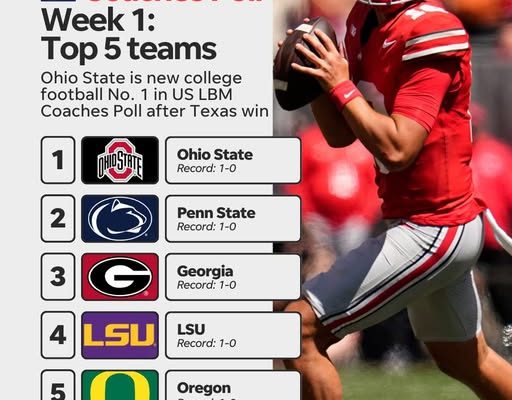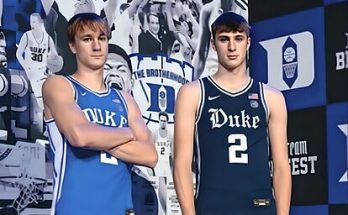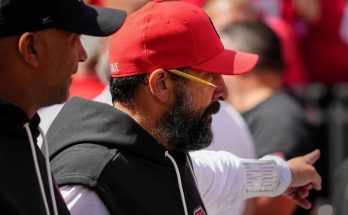After an opening week filled with marquee matchups, unexpected upsets, and thrilling finishes, the first in-season US LBM Coaches Poll paints a very different picture compared to the preseason edition. That’s the beauty of college football—it’s unpredictable, volatile, and full of momentum swings that can alter narratives in the blink of an eye. Preseason polls often carry lofty projections, largely influenced by hype, returning talent, recruiting classes, and the reputation of programs. But once the season begins, the game is decided on the field, and reality begins to separate perception from performance. Week one was a showcase of how quickly teams can rise, fall, or redefine themselves when given the stage against quality opponents.
Fans and analysts alike often approach preseason rankings with both excitement and skepticism. While they give us something to debate leading into the season, they are not always the most accurate indicators of how the teams will perform when it matters most. This past weekend was a reminder that some squads are better prepared than others right out of the gate, while some may need time to adjust, find their rhythm, and grow into the contenders many believed them to be. The US LBM Coaches Poll offers us the first in-season snapshot of how the coaching fraternity sees the national landscape after a small but meaningful sample size of actual competition. And it’s safe to say the adjustments reflect a mixture of validation for a few teams and humbling reality checks for others.
Opening week featured high-profile games that had direct implications on the poll. Teams that faced ranked opponents in neutral-site clashes or true road environments were given opportunities to prove themselves early, and those who rose to the occasion were rewarded. Conversely, programs that came in with hype but failed to deliver immediately felt the sting of the drop. It’s one of the most fascinating parts of early-season college football: one game can dramatically shift the perception of an entire program, even if there are still months left in the season.
What makes this first in-season poll intriguing is not only the shuffling within the top ten but also the surprises further down the rankings. Programs that might have been underestimated in August suddenly have the spotlight, while others who were comfortably ranked have already seen themselves leapfrogged. In many cases, the storylines behind these moves are just as compelling as the numbers themselves. For example, a team that returns a Heisman-caliber quarterback and dominates in week one may have strengthened its grip on a top-five spot, while another team that relied heavily on preseason pedigree but stumbled under pressure has seen its ranking slip.
Fans often debate whether early polls should even exist, arguing that they can unfairly shape the playoff discussion months later. But at the same time, the excitement and energy these polls generate are undeniable. They provide a snapshot of who is thriving and who has work to do. The Coaches Poll, in particular, carries weight because it reflects the opinions of those who understand the grind better than anyone—the coaches themselves. These are the men who break down film, design schemes, and prepare their players each week. Their collective assessment tells us a lot about respect in the coaching fraternity, as well as the eye test that numbers and stats alone may not reveal.
For fans of teams that climbed in the poll, the sense of validation is powerful. Nothing builds momentum like proving doubters wrong, especially against high-level competition. Players and coaches feed off that respect, using it as motivation to continue building. On the other hand, for those who fell, the sting of slipping in the rankings can be just as motivating. Many great seasons have been born from early wake-up calls, where a team realizes its flaws, corrects them, and comes back stronger. Early adversity can sometimes be the best thing for a program, especially if it forces players to sharpen their focus and embrace improvement.
The poll also gives us a glimpse at how conference races might unfold. The SEC, Big Ten, Big 12, ACC, and Pac-12 (or its evolving future form) are all jockeying for position not just nationally but within their own internal hierarchies. When a team takes down a top-15 opponent in week one, it doesn’t just help them climb—it can also send shockwaves through their entire league, raising the profile of conference play and adding drama to upcoming matchups. Fans love to see their team climbing the ladder, but they also keep an eye on rivals and future opponents. Every poll adjustment adds new fuel to those storylines.
Another fascinating aspect of the first in-season poll is the introduction of teams that were previously unranked. Every year, a few programs crash the rankings earlier than expected. Whether it’s an upstart program with a dynamic new quarterback or a team with a revamped defense that overpowers its competition, these risers create some of the most exciting storylines in September. Fans often rally around these underdogs, wondering if they are the next Cinderella story or if their early success is just a fleeting moment before reality sets in.
Of course, there are also programs that remain steady in the poll, unfazed by the chaos around them. These are often the bluebloods, the perennial contenders who treat week one like business as usual. While others shuffle up and down the rankings, these teams provide a sense of stability, reminding us why they are consistently trusted to compete at the highest level. Their ability to handle the spotlight and deliver, even against tough opponents, is part of what cements their status year after year.
As exciting as this first in-season poll is, it’s important to remember that it’s just the beginning. A single game can change everything, and the college football season is long, grueling, and full of unexpected turns. Injuries, weather, midseason slumps, and late-season surges can all drastically alter the picture we think we see right now. But that’s exactly why the poll is so fascinating—it evolves, adapts, and reflects the rollercoaster nature of the sport itself.
Fans should embrace the debates and discussions that polls create. It’s part of what makes college football culture so rich. Whether you agree or disagree with where your team stands, the conversation is half the fun. Did your team get too much credit for an easy win, or did they not get enough respect for a gritty victory? Should a team that lost to a top-five opponent really be punished as harshly as one that lost to an unranked squad? These are the debates that energize fans and fuel rivalries.
The first in-season US LBM Coaches Poll also serves as a reminder of the razor-thin margins that define college football. A single play can alter not just the outcome of a game but the trajectory of a season and the perception of an entire program. That’s why every snap, every possession, and every coaching decision matters. Coaches know that the poll reflects not just wins and losses but also style, execution, and composure under pressure.
Looking ahead, the movement we’ve seen in this poll sets the stage for even more intrigue in the weeks to come. As conference schedules ramp up, ranked teams will begin colliding more frequently, ensuring that the poll will continue to evolve. What we see now is just the first act in a long, dramatic season. And for fans, that means the best is yet to come.
College football thrives on passion, and the poll captures that passion in numerical form. Every jump or drop is felt deeply by fanbases who invest so much of their time, energy, and emotion into supporting their teams. It’s not just about rankings—it’s about pride, identity, and bragging rights. The energy that comes from seeing your team climb the rankings is electric, while the frustration of seeing them slide only fuels the fire to prove doubters wrong.
So as we reflect on this first in-season US LBM Coaches Poll, it’s worth asking: how do you feel about where your team landed? Did they get the respect they deserve? Do you think the coaches overlooked them, or maybe even gave them too much credit? These are the conversations that keep college football alive long after the final whistle blows.
I’d love to hear what you think. Which teams do you believe were ranked too high, and which ones didn’t get enough credit for their performances in week one? Do you think preseason hype still plays too big of a role in shaping these polls, or did this first in-season ranking finally reflect the real hierarchy on the field? College football is nothing without its passionate fans, so don’t hesitate to share your thoughts, reactions, and predictions. After all, the polls may belong to the coaches, but the debates belong to all of us.



